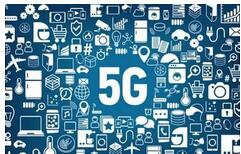When mobile communications traveled to the 5G era, his main battlefield was not only limited to the consumer sector, but was more closely linked to various industries. At the "Intelligent Networking V2X Technology Summit Forum", Dr. Wang Yingmin, chief engineer of Datang Telecom Group, put forward the view that unlike 3G and 4G, which are mainly facing the public demand, 5G is a scene-oriented era and will play in the vertical industry. Very important role.
In fact, at present, 5G has begun to comprehensively consider the application needs of various scenarios and various industries, and the development of a global unified 5G standard has become an industry consensus. Mobile Internet, virtual reality/augmented reality, Internet of Things, Internet of Vehicles, Industrial Internet, etc. will be hot applications for 5G.

LTE-V is a protocol specifically for shop floor communication and is known as the starting point for affecting the "connection" of the car network. The current LTE-V version belongs to 4.5G technology, and can be smoothly evolved to 5G in the future. What kind of development history has LTE-V experienced, and what is the significance of the intelligent network connection car? Che Yun and Dr. Wang Yingmin chatted.
V2X two camps
LTE-V is actually one of the two technology camps that implement V2X (Vehicle to Everything). It is mainly driven by domestic enterprises (including Datang, Huawei, etc.), and the other camp is the US-led IEEE 802.11P (DSRC).
LTE-V is an evolution technology based on 4G LTE system for intelligent transportation and vehicle networking applications, including LTE-V-Cell and LTE-V-Direct. In layman's terms, LTE-V-Cell relies on existing cellular networks to support large bandwidth and large coverage communications to meet TelemaTIcs application requirements; LTE-V-Direct can be independent of cellular networks to achieve low vehicle and surrounding environment nodes. Extended, highly reliable direct communication to meet driving safety needs.
In particular, the LTE-V-Direct mode can extend the vehicle's sensing range to a detection range of several hundred meters, which is superior to the detection range of other existing vehicle sensing systems such as radar and optical cameras. . The combination of multiple detection methods and the integration of information processing technology can effectively improve driving safety and traffic efficiency.
When it comes to 802.11P, DSRC (Dedicated Short Range CommunicaTIons) is generally mentioned. DSRC is an efficient wireless communication technology developed based on the IEEE802.11p standard. It can realize real-time, accurate and reliable two-way transmission of images, voice and data in a small range, such as "car-road" and "car-car". Two-way communication. The development of DSRC is relatively mature, and it is also the mainstream technology of car networking in Europe and the United States.
What advantages does LTE-V have over 802.11P? In Wang Yingmin's view, 802.11P has an objective first-mover advantage, and now has a commercial chip and accumulated many years of testing experience; while LTE-V is a technology for vehicle networking applications, based on LTE evolution, with independent intellectual property rights, Many latecomers.
Aluminium wire as a good anticorrosion material,in steel structure surface anti-corrosion(container,dam and sluice gate,ductile iron pipe,bridge etc.)
Aluminum Wire,Zinc Aluminum Wire,High Pure Aluminum Wire,Aluminum Alloy Welding Wire
Shaoxing Tianlong Tin Materials Co.,Ltd. , https://www.tianlongspray.com